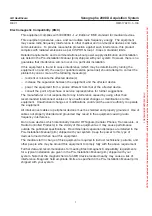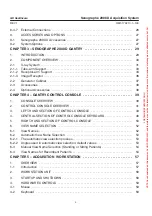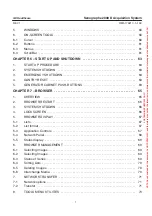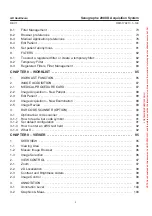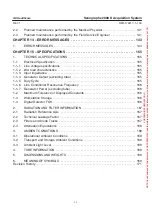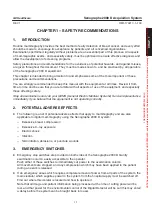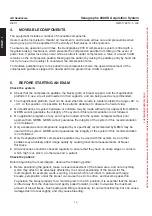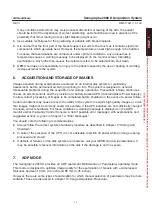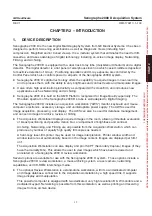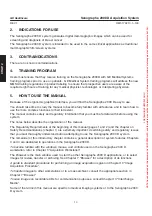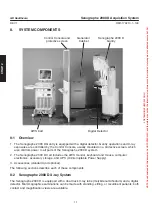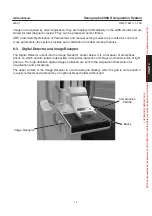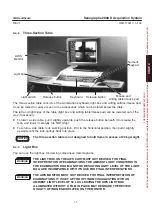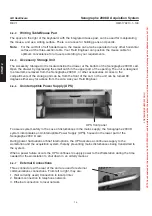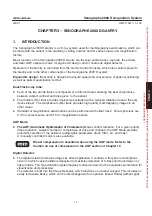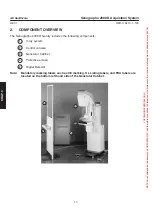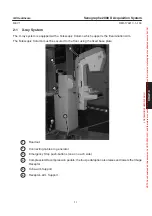
CHAP
. 1
GE Healthcare
Senographe 2000 D Acquisition System
REV 1
OM 5179217–1–100
16
4.
MOVEABLE COMPONENTS
The equipment includes a number of moveable components.
Users must be instructed to monitor all movements, and to take all due care and precautions when
moving any part of the equipment in the vicinity of themselves or other persons.
To ensure safe operation at all times, the Senographe 2000 D compression system is fitted with a
magnetic braking mechanism, which prevents the compression paddle from falling in the event of
power loss. If power loss does occur while a patient is under compression, a force of around 5 daN
remains on the compression paddle. Disengage the patient by raising the paddle gently by hand (do
not try to raise it too quickly) to counteract the compression force.
To minimize potential injury to the patient in decompression mode, the upward movement of the
compression paddle is stopped if a downward force greater than 3 daN is applied.
5.
BEFORE STARTING AN EXAM
Check the system:
D
Check that the compression paddles, the Bucky (grid) or breast support, and the magnification
platform if in use, are all well inserted in their supports, and are being used as recommended.
D
The magnification platform must
not
be used when the column is rotated outside the range +90
_
to
–90
_
. In this position, it is possible for the patient’s abdomen to obscure the field of view.
D
No modifications to system hardware or software may be made without prior approval from GEMS.
GEMS cannot guarantee the integrity of the system if this recommendation is not followed.
D
No application programs of any sort may be loaded onto the system computer without prior
approval from GEMS. GEMS cannot guarantee the integrity of the system if this recommendation
is not followed.
D
Only accessories and components supplied by or specifically recommended by GEMS may be
used with the system. GEMS cannot guarantee the integrity of the system if this recommendation
is not followed.
D
Only Senographe 2000 D compression paddles may be used with the system. Use of other
paddles may adversely affect image quality by causing inaccurate measurements of breast
thickness.
D
All accessories should be checked regularly to ensure that they have no sharp edges or corners
which might cut, pinch, or otherwise hurt a patient.
Check the patient:
Before beginning the mammogram, observe the following points:
D
Before positioning the patient, make a visual assessment of the breast area, and note anything
which may affect or be adversely affected by the correct positioning of the breast for the
mammogram, for example, warts, scarring, or skin which is not intact. In patients with large
breasts, perspiration under the breast can cause the skin to soften, and become paper-thin.
To position the breast properly for a mammogram in the CC position, it is essential that the breast
is lifted away from the chest wall and gently pulled forward, in order to visualize the maximum
amount of breast tissue. Such pulling and lifting is necessary for correct positioning, but can cause
damaged skin to tear slightly, and may cause bleeding.
FOR
TRAINING
PURPOSES
ONLY!
NOTE:
Once
downloaded,
this
document
is
UNCONTROLLED,
and
therefore
may
not
be
the
latest
revision.
Always
confirm
revision
status
against
a
validated
source
(ie
CDL).

